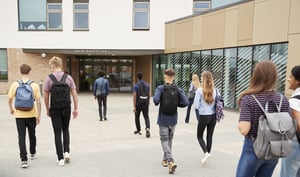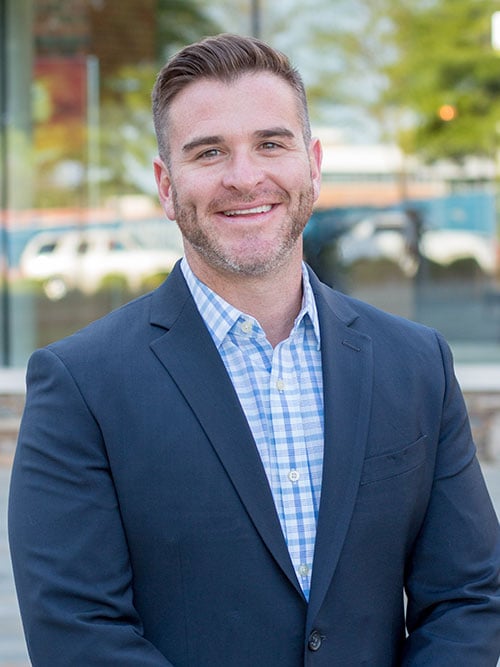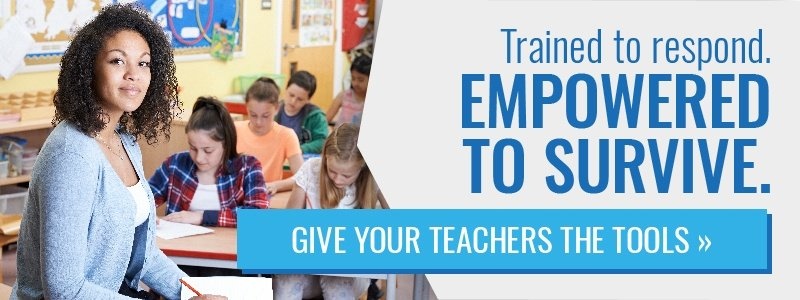 Things that make students feel unsafe at school can range from bullying in the cafeteria to an unconcerned teacher in the classroom. In a world where school shootings are an imminent and unpredictable threat, schools must do everything they can to protect students' safety and also make them feel safe.
Things that make students feel unsafe at school can range from bullying in the cafeteria to an unconcerned teacher in the classroom. In a world where school shootings are an imminent and unpredictable threat, schools must do everything they can to protect students' safety and also make them feel safe.
Creating a safe and healthy learning environment for students is harder than ever, but it is also necessary for their success.
Certain negative experiences at school will deteriorate a student's sense of security over time. Let's discuss some of those experiences so that your school can come up with a plan to make your institution a safer place for your student body.
Bullying
Even if a student isn't the victim in a bullying situation, simply witnessing such an event can severely hinder their emotional and mental wellbeing, limiting their ability to focus and perform well in school. The effects of bullying are compounded by the frequency at which students experience or are exposed to it. They may first respond with anxiety, but eventually that anxiety plays out in other forms such as becoming defensive and isolating, or going on the offensive and attacking.
Here are common forms of bullying that many students experience on a daily basis:
- Physical. This is what most people think of when they think about bullies at school. Physical bullying occurs when one person attacks another by pushing, punching, or using other types of physical force against them.
- Cyber. The internet with its many social networks have created yet another way for students to bully one another. Whether it's posting hateful comments on someone's photo, sending a hurtful text message, or making confidential information public, cyber bullying occurs behind a screen. The affects, however, are no less brutal than physical bullying.
- Social. Social bullying happens all of the time. It's often not even called "bullying" because social bullying can be something as simple as excluding someone or spreading a rumor. Too often, social bullying is overlooked because it's seemingly harmless and mild in its early stages. But social bullying often sets the stage for more extreme forms of bullying later on.
- Verbal. Verbal bullying is nothing short of verbal abuse. Hate speech is also a form of verbal bullying and can occur in any of the other bullying contexts mentioned previously.
Hazing
Certain forms of hazing are illegal in most states, and the practice is prohibited at most colleges and universities. Yet, many sororities and other groups continue to require hazing for new members. Because hazing often escalates to dangerous levels, putting students' safety at risk, it is easily one of the most serious aspects of school that makes students feel unsafe and anxious.
Threats of Violence
Because school shootings have become so common, threats of such violence must be taken very seriously. Countless schools have gone into lockdown because another student made a threat. Even if the threat turns out to be false, much of the damage is already done: Students are left feeling vulnerable, unsafe, and victimized.
Drug or Alcohol Activity
How does drug and alcohol activity contribute to a student's perception of safety at school? Let's think about it — If drugs and alcohol are technically banned from school, but they're still being passed around, students can't help but feel that authority is powerless against students involved in such activities. And if school administration is either unable or unwilling to address drug-related activity, how are can they possibly be vigilant enough to address threats of violence?
Weapons Brought to School
The number of times students have brought weapons to school and not used them is staggering. Sometimes students bring weapons for no other reason than to brag. Others intend to use them, but are stopped when another student tells an authority figure about the weapon. This is just another reason why it's vital for students to grasp the importance of "see something, say something" when it comes to threats of violence.
Specific Areas
Many times, there are specific areas in a school where students feel especially unsafe. If your school has locations or situations in which students admittedly do not feel safe, you need to find out what those are and figure out a way to address the safety concern. Areas where students often feel unsafe include:
- Hallways. They're crowded, and a student can easily be shoved or verbally bullied without anyone noticing.
- Restrooms. At times, they're isolated, making students extremely vulnerable in the wrong set of circumstances.
- Cafeteria. Lively and busy, cafeterias have unfortunately been the site of school shootings in the past.
- Class. Sometimes it's because of classmates, other times the teacher, or perhaps the format of the class itself, but classrooms are often an area of school where students feel unsafe.
- Parking Lot. Every school should have security cameras in their parking lots and throughout the school's exterior. Without cameras or some other form of security, the parking lot is an isolated place at predictable times of the school day.
- Going to and from school. Whether it's on the bus, at the bus stop, or on the walk to school, bullying can happen anywhere. As a school administrator, it's important to check in with your bus drivers and other staff to find out if they are seeing any issues that threaten students' safety.
Unconcerned Teachers or Staff
If students do not believe their teachers are concerned with their safety, then they will not feel safe at school. Teachers and staff must be actively involved in promoting a safer environment for their students in order for students to report concerning behaviors such as threats of violence or bullying. Many students fail to report safety concerns because either they don't know who to tell, or they do not trust authority figures to take appropriate action.
As a school administrator, you can ensure that your teachers and staff are prepared and equipped to take appropriate action. How? Provide them with Active Shooter Response Training. The experienced instructors at ProActive Response Group have decades of experience in law enforcement, and we can train your teaching team to identify safety concerns and effectively respond in a crisis. Contact us today at (888) 512-3530 to learn more!
.png?width=499&height=133&name=Logo-menu%20(1).png)



